If you’re going on a backpacking trip through Central America, then Lake Atitlan in Guatemala needs to be near the top of your must-visit list.
Forget bar-hopping. Lake Atitlan is all about town-hopping.
It’s rare to visit a place where you can hop on a boat, and in five minutes, be in a new town that has a completely different feel and look to it than your previous town.
And it’s even rarer to visit a place that has three immense volcanoes as a backdrop.
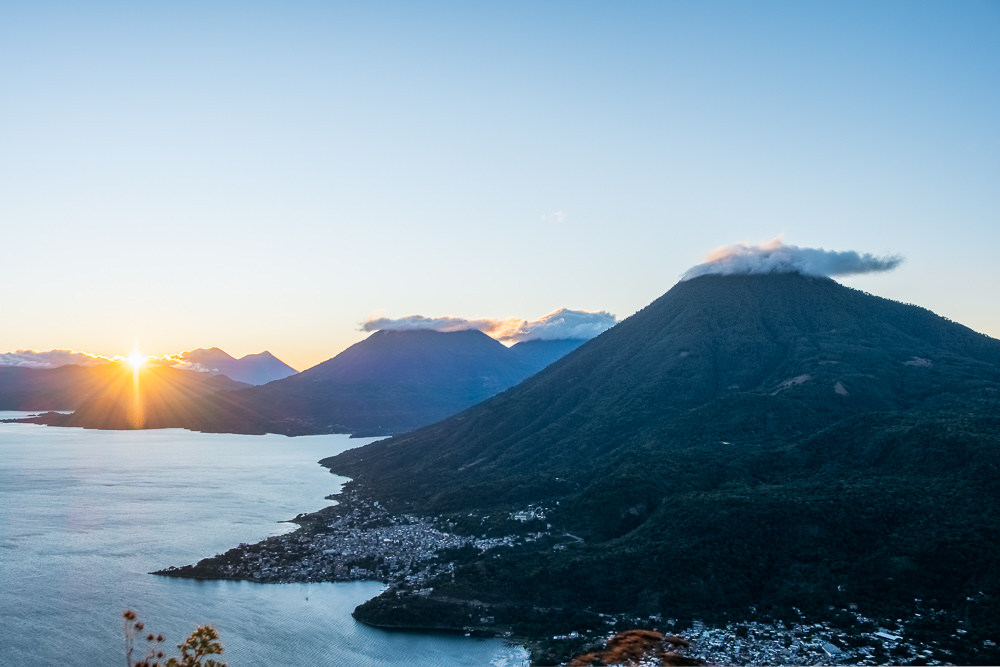
But Lake Atitlan isn’t just nice to look at, there’s plenty of substance beneath its tranquil appearance.
A cluster of eclectic towns are positioned around the shores of the lake. Whether you are visiting to party, hike, learn Spanish, relax or for wellness, there’s a town and a place that will suit you.
I spent almost a month at Lake Atitlan recently and here’s my guide to making the most of your visit to a spot that is commonly referred to as one of the most beautiful lakes in the world.
Plan your stay in Atitlan
About Lake Atitlan
Lake Atitlan was formed thousands of years ago by a volcanic eruption. The eruption helped create the lake and what is now regarded as one of the backpacking hotspots of Central America.
It’s the deepest lake in Central America, with a maximum depth of 340 metres, and it’s nearly 18 kilometres long and eight kilometres wide.
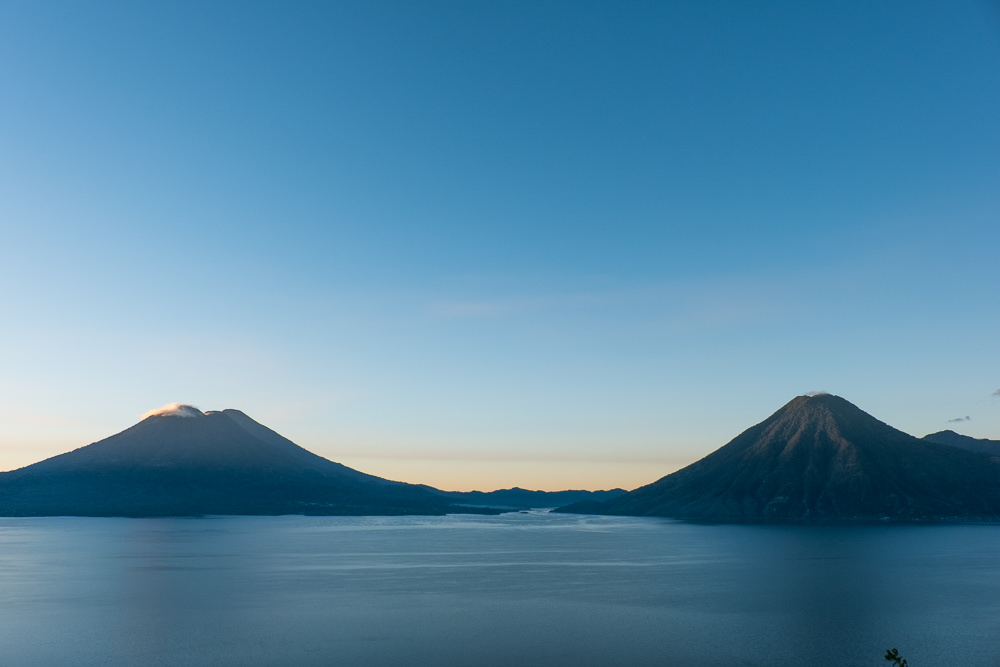
Three dormant volcanoes, San Pedro, Atitlan and Toliman, loom over the lake and provide an epic background for photos.
At just over 1,500 metres in elevation — similar to Antigua — the weather at Lake Atitlan is pleasant year-round. The best time to visit is during the drier months of November to April.
Getting to Lake Atitlan
Located in the southwest of Guatemala, Lake Atitlan is easily accessible by tourist shuttles or buses from the main cities of Antigua, Xela (Quetzaltenango) and Guatemala City.
It takes about three to five hours to reach Lake Atitlan on a tourist shuttle and you can expect to pay around 50-70 quetzals for a ride ($6-9 USD). I paid 55 quetzals for a tourist shuttle from Antigua to Lake Atitlan.
Every hostel and tour agency can help you book one of these shuttles and there’s no need to book too far in advance – the day before you want to leave is perfect. For popular routes, like Antigua to San Pedro, there are up to three departures a day.
If you’re looking to save a bit of money, the public buses (aka chicken buses) are an adventurous option for getting to and from Lake Atitlan.
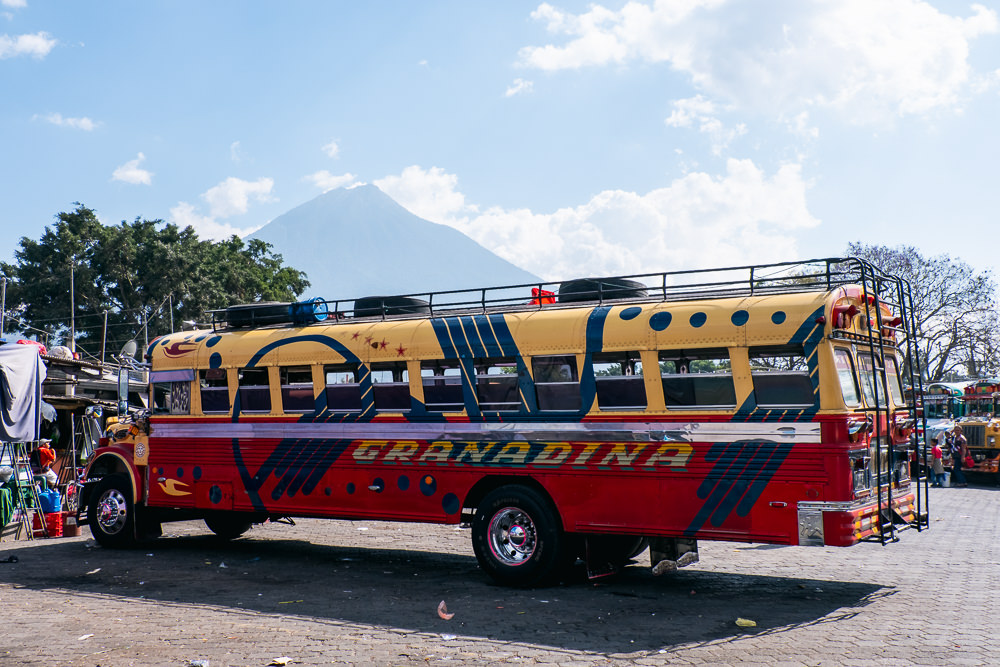
They may be a bit less comfortable, stop at random times and drive erratically all over the road, but taking a public bus in Guatemala is a rite of passage for any budget backpacker.
I took a public bus from Xela to the town of Panajachel at the lake. I couldn’t find a direct bus so I had to change four times but the whole trip went smoothly and was much cheaper than a shuttle.
It’s best just to head to your town’s bus station in the morning and any of the drivers will be able to help you out with finding the correct bus.
The public buses don’t have the best reputation for safety but I never had any issues using them. Only take them during daylight hours and keep an eye on your luggage. I took my luggage inside the bus every time, instead of letting the driver put it on the roof.
The towns of Lake Atitlan
While Lake Atitlan is one single destination, there are 11 different towns and villages dotted around the shores. Three of these towns are the most popular with travellers.

There’s San Pedro which is a backpacker’s favourite due to its many bars, fun hostels and wide range of activities.
Across the lake from San Pedro is the hippie town of San Marcos. If you like yoga, meditation, drum circles, vegetarian/vegan food and lots of other wellness and alternative events, then San Marcos is right for you.
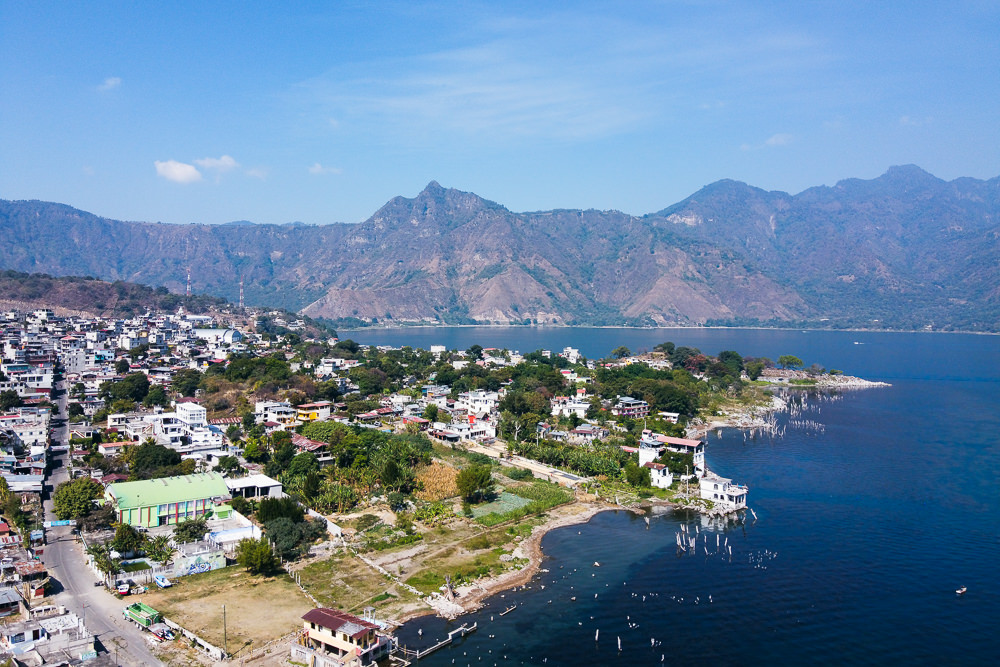
And the biggest town on the lake is Panajachel, which is a great place to base yourself for any travels around the lake. Panajachel is the most developed of all the towns and has many shops, restaurants and markets.
The towns of Santa Cruz, Santiago, San Juan and Jaibalito are less popular with backpackers but are worth checking out for a day.
Things to do at Lake Atitlan
Hiking
Lake Atitlan is gorgeous to look at from the comfort of a bar or restaurant but to truly appreciate its beauty, you need to lace up your shoes.
The hike to the summit of Indian Nose for sunrise is by far the most popular hike in the area. Tours depart from all of the main towns early in the morning, around 4/4.30am. It’s an early start but the sunrise makes it worth it.
Tours to Indian Nose cost around $100 quetzals (13 USD) and include return transport, a guide and a hot drink at the summit.
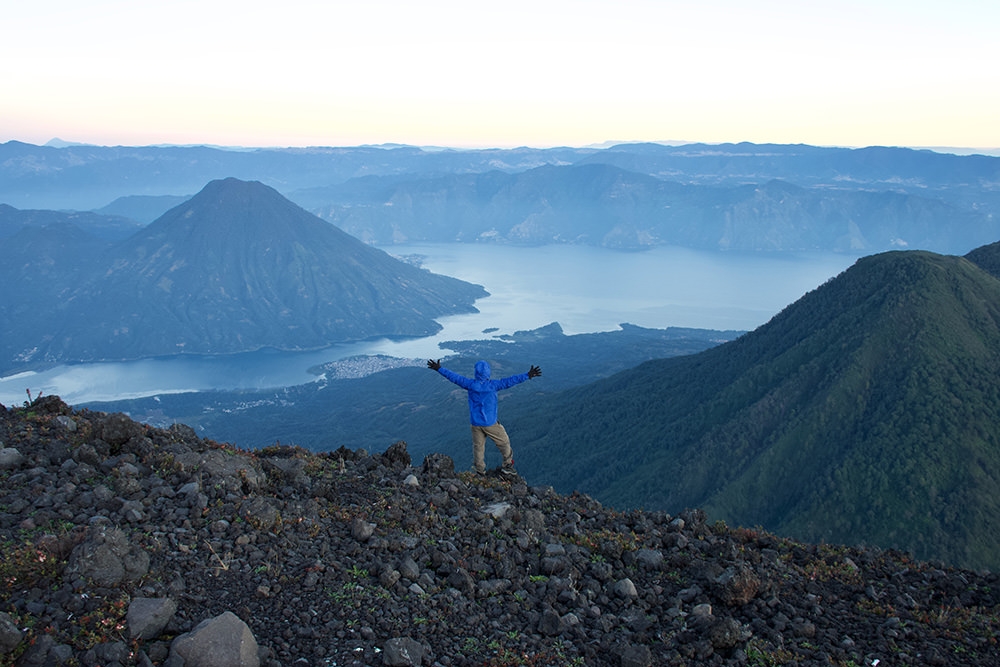
The hike itself is relatively easy, as buses take you most of the way, leaving just a short 20-30 minute walk to the summit. From Indian Nose, you have a complete view of the lake and on a clear morning, the red glow of Volcan Fuego erupting can be seen.
Volcan San Pedro is, as the name suggests, the big volcano you can see behind the town of San Pedro. It’s a more challenging hike than Indian Nose but it does have safety issues with reports of tourists being robbed along the route. I did this hike solo and didn’t have any issues but if you are after more peace of mind, hire a guide and definitely don’t take any valuables with you.
Volcan Atitlan and Volcan Toliman, which are both near the town of Santiago, can also be climbed but they are much less popular. I could only find one tour agency offering a day hike to them, but as the price was $200 USD, I passed.
And finally, the hike along the lake from San Marcos to Santa Cruz is a great way to spend a day, especially as you can stop off at the town of Jaibalito halfway through for a swim or meal.
Yoga, meditation and wellness activities
While most of the towns on Lake Atitlan offer yoga, meditation and other wellness type experiences, San Marcos easily has the widest range of these activities.
San Marcos is very alternative and there is always something unique to do. The San Marcos Facebook group is how you can find out about all of these different activities and events. Or just walk into any cafe and they will likely be a noticeboard filled with flyers.
I did a half-day breath and crystal grid healing workshop in San Marcos. It was strange. The people in the class were strange, especially one guy who must have taken something beforehand. But as bizarre as it was, it was enjoyable and took me out of my comfort zone.
Watersports on the lake
You’ll often hear conflicting advice about whether it’s safe to swim in Lake Atitlan or not. While the water can be quite dirty near San Pedro and Panajachel, at Santa Cruz and San Marcos the water is much cleaner and fine for swimming.
I swam many times near Santa Cruz and San Marcos and didn’t have any issues. There’s a nature reserve at San Marcos which is a great place to spend a day by the lake. As a bonus, it also has an eight-metre high diving board which is a whole lot of fun.
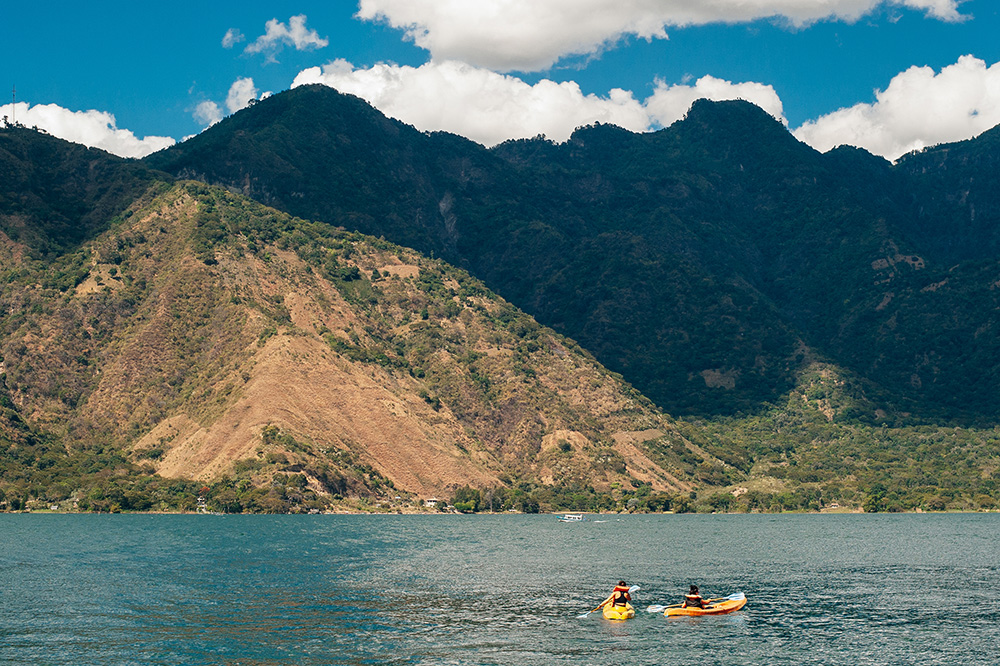
Santa Cruz has a scuba dive centre which runs courses and fun dives on the lake. There are old buildings and ruins in the lake but I heard from friends that went diving that the water clarity was very bad. It may have just been a bad day for visibility, but the conditions don’t seem to change too much.
If you want to stay dry while still enjoying the lake, there are many places around the lake to hire kayaks or stand up paddleboards. In San Pedro, you can hire a kayak for $15 quetzals ($2 USD) for an hour.
Watch a local football match
Football (or soccer for our USA friends) is the most popular sport on the lake, and the bigger towns all have teams that compete in the Guatemalan leagues. If you’re visiting when the season is on (February onwards), try and get to a game.
I went and watched ‘El Clásico’ between San Pedro and Panajachel in San Pedro’s beautiful stadium, which sits high up on the hill overlooking town.
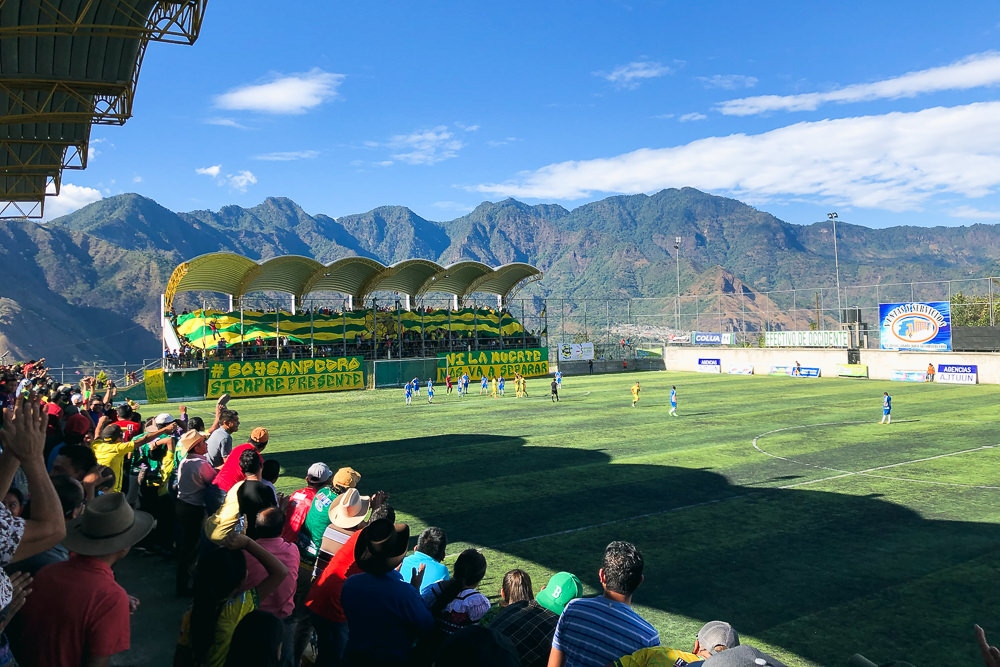
San Pedro came back from two goals down to win by a goal which delighted all the locals, who spent the 90 minutes of game time singing, chanting and letting off fireworks. It was a really fun atmosphere and tickets were only $20 quetzals ($2.50 USD).
Food
You can find almost every type of cuisine around Lake Atitlan, from more western food in the main tourist areas to authentic (and cheap) local fare in each town’s main market area.
If you are anywhere near the lake on a weekend, then you must visit Smokin Joe’s BBQ at Panajachel on a Saturday or San Pedro on a Sunday. It’s an American style feast that serves up humongous portions of steaks, ribs, burgers and salads.
Other great options in San Pedro include The Fifth Dimension and budget-friendly Ha Falafel. In Panajachel, try out Deli Llama de Fuego for fresh salads and sandwiches or Guajimbo’s for a meat fix.
Vegans and vegetarians are looked after in all of the towns but San Marcos has the most options. Try Circle’s Cafe and Hostel or Samsara’s Garden.
Street food is readily available in all of the towns and is a great way to keep your budget from blowing out. Head to the Mercado in San Pedro or Calle Santander in Panajachel for the most options.
Expect to pay around $30-50 quetzals ($4-6.50 USD) for most meals.
There are small supermarkets scattered throughout all the towns but if you are after a larger supermarket, then you will have to pay a visit to Panajachel.
Nightlife
San Pedro and San Marcos are the nightlife hubs of Lake Atitlan.
In San Pedro, Hostel Fe Bar and Sublime are almost always busy and filled with backpackers. Of particular note is Thursday night’s bar crawl on the main strip and trivia at Hostel Fe on a Friday night.
Hostel del Lago always has something going on in San Marcos, or check the Facebook group to see what events are on when you’re visiting.
The worst thing about having a night out on Lake Atitlan? Noise restrictions in San Pedro (which I think are the same in San Marcos) come into force at 11 pm, which is very early for most. So pro-tip, start your night early because it will likely be finishing before you know it.
Markets
Many agencies around Lake Atitlan offer tours to the Chichicastenango Market which is the largest market in Central America. It’s about a two-hour journey each way by shuttle to the market. I need a nap after about five minutes at any market, so I didn’t visit Chichicastenango, but I heard great things about it from friends that did visit.
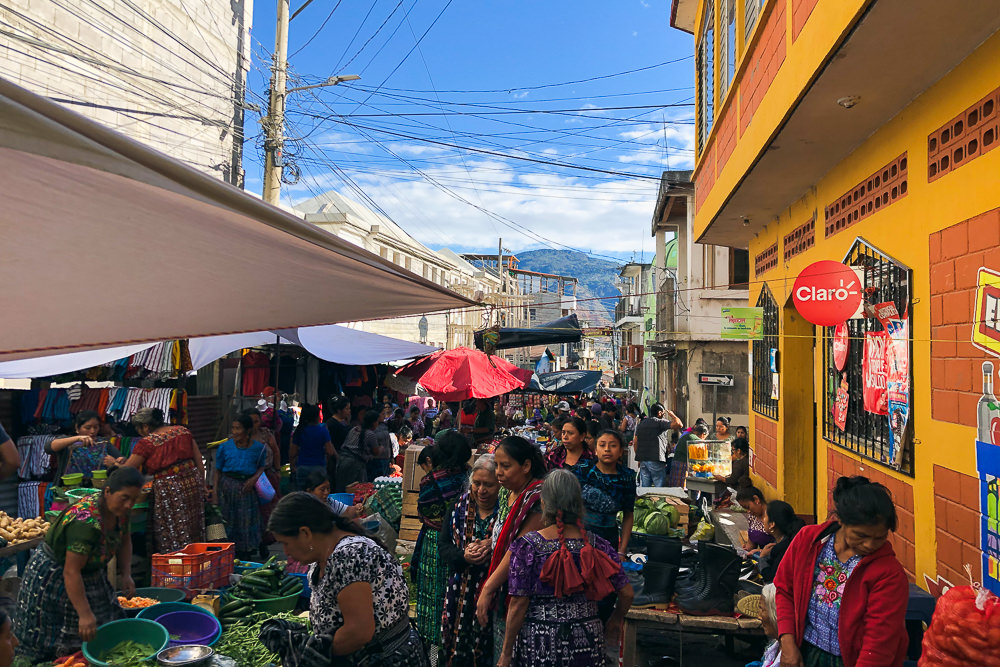
For a smaller version of Chichicastenango, wander along Calle Santander in Panajachel which has many small stores selling traditional gifts and souvenirs.
And if you are looking for gifts and trendy second-hand clothes, the main street in San Marcos is full of options.
Learn Spanish
Guatemala is arguably the best country to learn Spanish in Central America and Lake Atitlan has many Spanish schools, especially in San Pedro, San Marcos and Panajachel.
Courses are cheap and you can also opt to stay with a local family who only speak Spanish and Mayan. Most of the schools also offer daily activities like salsa, painting or cooking classes.
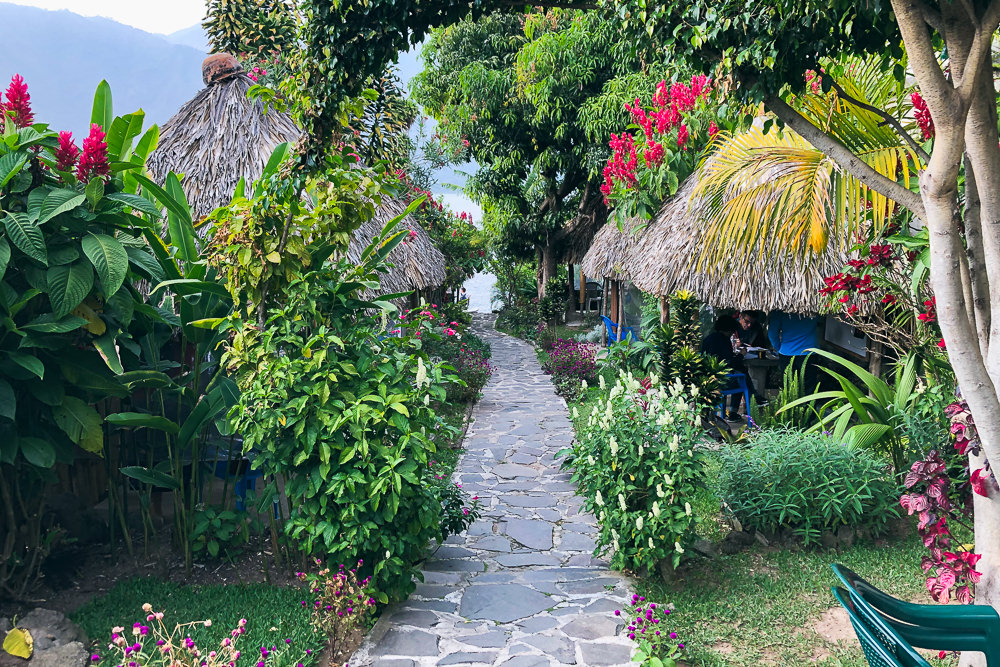
I studied in San Pedro and paid around $1,400 quetzals ($183 USD) a week for 15 hours of lessons, a homestay with a private room and three meals a day, Monday to Saturday.
I would recommend finding a town that you like and then visiting the Spanish schools in that area. See which school you like the best and go for that option. You don’t have to book your study ahead of time; I organised mine at a day’s notice.
Local culture
Spanish is spoken at Lake Atitlan, but for many of the locals, their first language is Mayan. Once you explore away from the main tourist areas, you’ll begin to see the Mayan influence in how the locals dress and work.
To immerse yourself in the local culture, head to San Juan and do a workshop tour of the plant and Mayan herbal clinic.
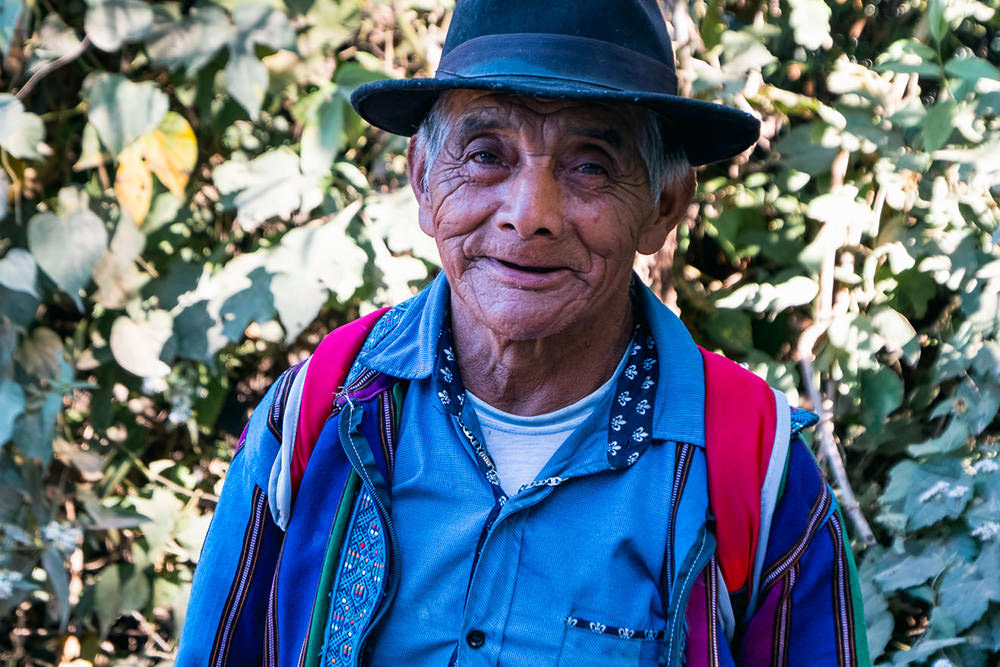
In most of the towns, you will also be able to find Mayan painting classes taught by local artists or authentic cooking classes.
A bonus of studying Spanish in Lake Atitlan is that most schools also offer educational activities about the Mayan history of the area and Guatemala in general.
Getting around Lake Atitlan
Upon first arriving at Lake Atitlan, you’ll soon realise the roads connecting the different towns are pretty dire. The main road into San Pedro, for example, is an awful dirt track that must claim the lives of many Tuk Tuk suspensions a year.
Thankfully, boats (or lanchas in Spanish) are the preferred method of transport on the lake and make travelling around simple.
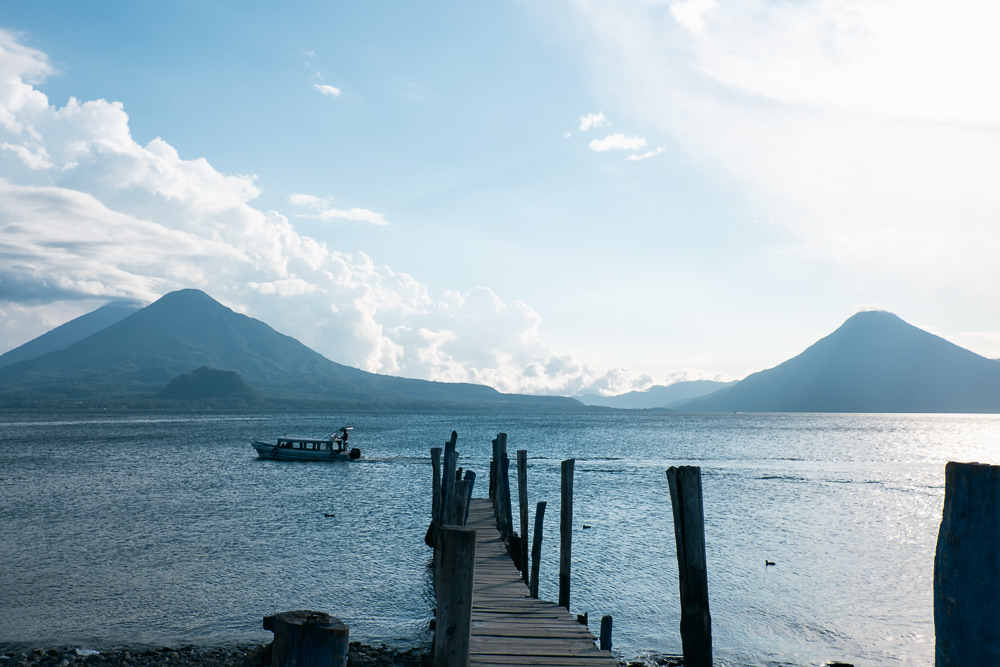
The boats run constantly all day and into the early evening. Each town has a dock where local drivers will direct you to the right boat.
Sometimes you don’t have a choice, but it’s better to travel on the lake in the morning before the wind picks up and makes the conditions a bit rougher.
As a guide, this is what you will be paying to get from town to town:
San Pedro to Santiago: Q10 (about $1.30 USD)
San Pedro to Santa Cruz: Q20
San Pedro to San Marcos: Q10
Panajachel to Santa Cruz: Q10
Panajachel to San Marcos: Q25
Panajachel to San Pedro: Q25
San Marcos to Santa Cruz: Q10
Tourists are charged more than locals, so don’t think you’re getting ripped off if you see a local paying less than you.
There’s no need to ask the boat driver the cost for the trip before hopping onboard. Just hand over your money at the end of the trip. And if you don’t have the correct amount, the driver will hand over the correct change to you without a hassle.
Where to stay at Lake Atitlan
If you’ve got the time, arrive at Lake Atitlan with flexible travel plans.
Start in San Pedro and stay at Mr Mullet’s or Hostel Zoola in the main area of town. All three hostels are social and have events on most nights, but due to the strict 11 pm noise curfew in San Pedro, if you are looking for a quiet place to stay they are also suitable.
From San Pedro, you can easily visit San Juan for half a day to check out the markets or join a tour of a local Mayan workshop.
If you want to relax for a couple of days, take a boat to the Doozy Koala Lake House near Santiago for a prime spot on the lake.
Then head to San Marcos which is a quick trip away. The hostel with the most going on is always Hostel Del Lago.
For another couple of days soaking up the sunshine on the lake, book in at fun glamping spot Free Cerveza or La Iguana Perdida in Santa Cruz. Or just visit Santa Cruz on a day trip and combine it with a stop at the nearby town of Jaibalito.
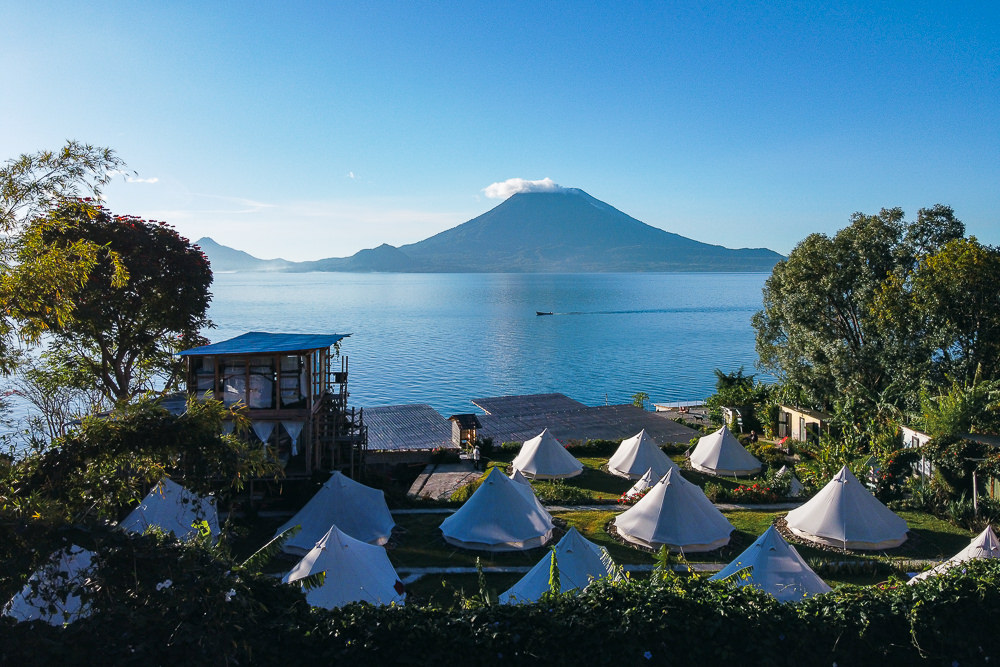
Finally, wrap at your stay in Panajachel with accommodation at Selina Atitlan. Panajachel has connections to all the nearby cities so it’s easy to depart the lake from here.
Most hostels are around $60-100 quetzals ($8-13 USD) a night
By keeping your travel plans flexible, you can easily extend or reduce the amount of time you spend in each town depending on whether you like it or not.
But be aware, you’ll meet a lot of travellers who arrived at Lake Atitlan with the intention of only staying for a week or so, and many years later, they are still there.
Lake Atitlan is that sort of place.
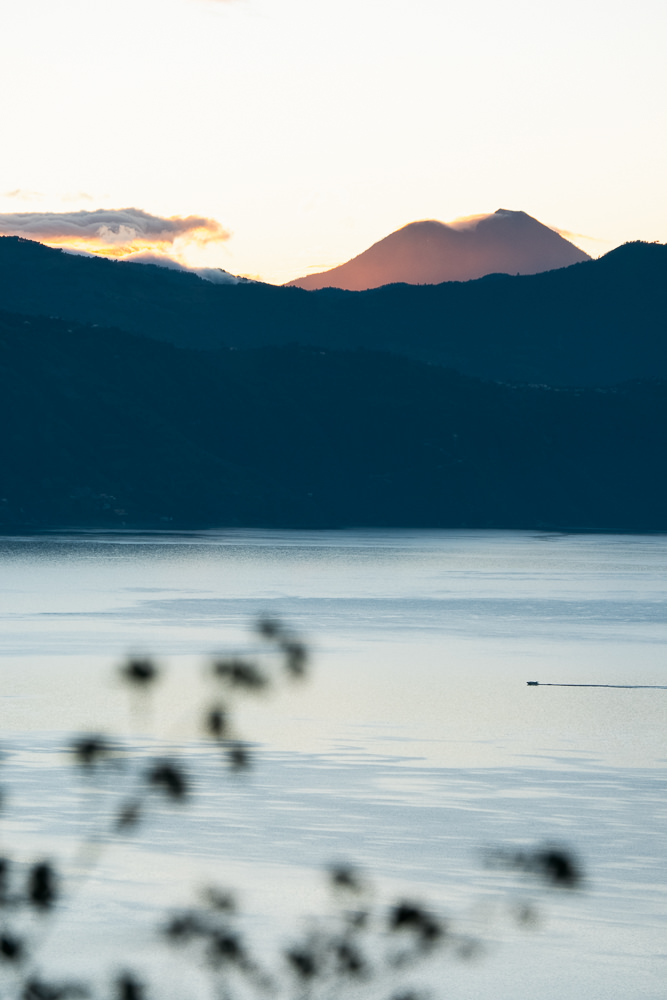
Some links may be affiliate links, meaning I may earn commission from products or services I recommend. For more, see site policies.
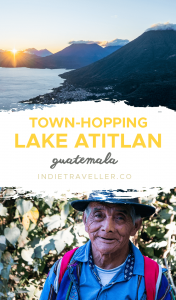
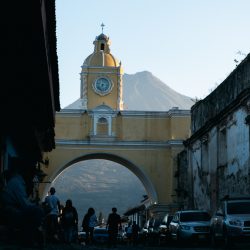
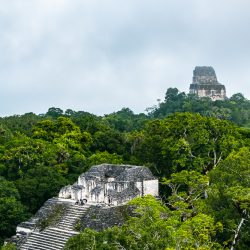




Such a beautiful place and makes me reminisce on a trip taken many years ago to Lake Atitlan. Looking at your list of things to do I wish i could be back there a little older and wiser to experience more of the region.
Great and accurate article about beautiful Lake Atitlan. I spent the past three years living there in Panajachel and love the local people, the lake & volcanoes, and the energy of this remarkable spot. I must recommend my favorite eatery in Panajachel – Circus Bar – for drinks and delicious food in a cozy atmosphere with eclectic music.
It must be amazing to live there! I’ve traveled a lot but Atitlan remains one of my favorite places… been there twice, but hope to spend time there again someday. Thanks for sharing that tip!